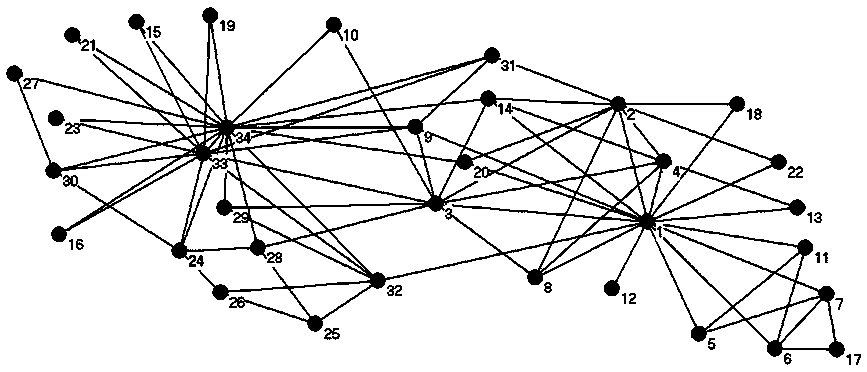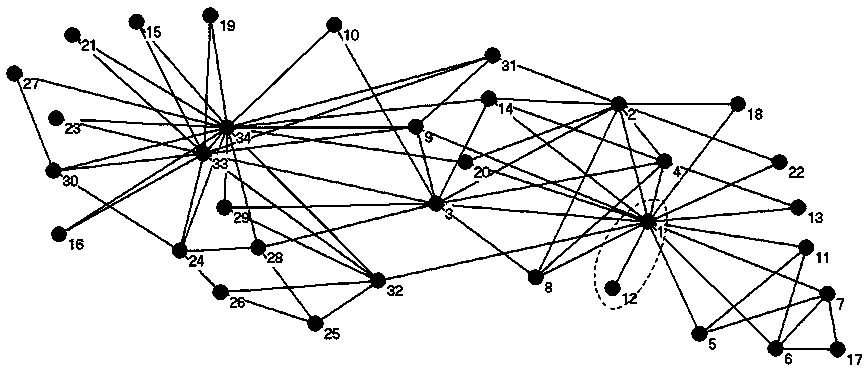Adaptive random neighborhood community division algorithm based on modularity optimization
A technology for dividing algorithms and modularity, applied in computing, data processing applications, forecasting, etc., can solve problems such as lack of attention to the stability of algorithm results, and achieve the effect of improving computing speed, reducing the number of times, and ensuring accuracy and stability.
- Summary
- Abstract
- Description
- Claims
- Application Information
AI Technical Summary
Problems solved by technology
Method used
Image
Examples
Embodiment Construction
[0039] In order to make the technical problems to be solved by the present invention, technical solutions and advantages of the invention clearer, the present invention will be described in detail below in conjunction with the accompanying drawings and embodiments. It should be noted that the specific embodiments described here are only used to explain the present invention, not to limit the present invention.
[0040] The invention is a novel community division algorithm for network analysis—adaptive random neighbor algorithm based on modularity optimization (abbreviated as RSNL). As an example, this application will use a karate club network to demonstrate the division process of this algorithm. The karate club network contains 34 nodes and 78 edges. This network is a classic network used for community division.
[0041] First, if figure 1 As shown, after inputting the karate club network data set into this algorithm, initially, all nodes are in an independent comm...
PUM
 Login to View More
Login to View More Abstract
Description
Claims
Application Information
 Login to View More
Login to View More - R&D
- Intellectual Property
- Life Sciences
- Materials
- Tech Scout
- Unparalleled Data Quality
- Higher Quality Content
- 60% Fewer Hallucinations
Browse by: Latest US Patents, China's latest patents, Technical Efficacy Thesaurus, Application Domain, Technology Topic, Popular Technical Reports.
© 2025 PatSnap. All rights reserved.Legal|Privacy policy|Modern Slavery Act Transparency Statement|Sitemap|About US| Contact US: help@patsnap.com



